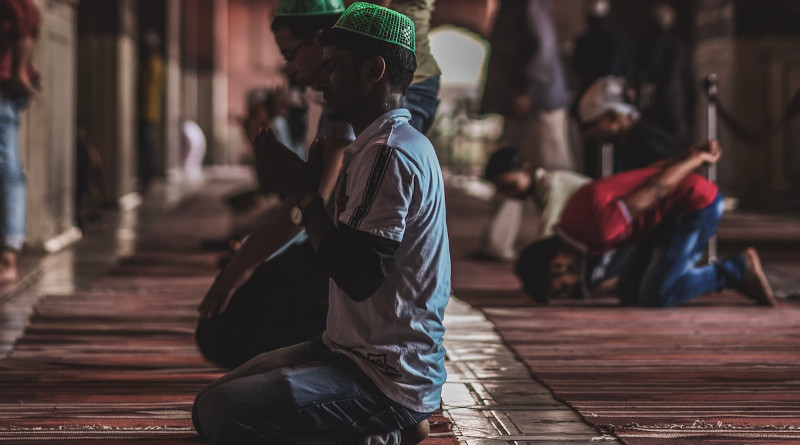
By Golam Rasul
Religious minorities arefrequently subjected to discrimination, humiliation, exclusion and even physical violence in India. Published in the middle of the 2024 parliamentary election, a recent report by the Economic Advisory Council to the Prime Minister of India whichexamines trendsin religious minority populations has reignited an old myth that Muslims will outnumber Hindus in India and that Hindus will lose political and cultural influence.
Thefindings of the reportfit well with thenarrativepromoted by right-wing politicians that Indian Hindus are in danger, Muslims are growing too fast and that they will soon outnumber Hindus anddominate politics and culture. They argue that Hindus should unite and put their trust in theBharatiya Janata Partyto protect their interests. If liberal parties like the Indian National Congress gain power, they warn that Hindus’ property will be taken away and given to Muslims.
This narrative has spread widely and intensified deep-rooted political polarisation between Hindus and Muslims. Anti-Muslim hate speech is rising. Prime MinisterNarendra Modi, in hiselection speech, referred to Muslims as ‘infiltrators’ and blamed them for having ‘too many children’. But this narrative is a misleading reading oftrue demographic trends.
Between 1950–2015, the minority Muslim share of the population increased by 43.15 per cent in India, while the Hindu population fell by 7.82 per cent. During the same time period, the minority Hindu share of the population in Bangladesh fell from 23 per cent to 8 per cent and the Hindu share of the population in Pakistan fell from 13 per cent to 2 per cent. Buddhist-majority Bhutan and Sri Lanka also witnessed significant decreases in their minority Hindu populations, and the Muslim and Christian populations increased slightly in Hindu-majority Nepal.
While religious faith can influence attitudes toward family planning and fertility, an increasing body of evidence suggests that socioeconomic status, education, women’s empowerment, access to healthcare and sociocultural norms also play a crucial role. For instance, Muslim women in Andhra Pradesh and Keralatend to have fewer childrenthan Hindu women in Bihar and Jharkhand. Several Muslim-majority countries, including Albania, the United Arab Emirates, Qatar and Iran have experienceddeclines in their fertility ratesas their level of socioeconomic development has increased, bringing them below the global average.
Despite India’s overall progress in socioeconomic development, the Muslim communitylags behindin education, formal employment, income and access to essential public services including health and family planning. Many live below the poverty line. Despite the Muslim minority growing from 11 per cent in the mid-1980s to 14 per cent today, Muslim representation in Parliament has actually declined from 9 per cent to 5 per cent.
Between 1951–2011, theHindu population increasedfrom 304 million to 966 million, while the Muslim population in India grew from 35 million to 172 million. Despite Muslims having a higher fertility rate, the gap between the Hindu and Muslim populations has widened from 269 million to 794 million. This gap is expected to widen even further in the next census, scheduled for 2024, following the election. Contrary to widely held belief, current demographic trends do not support the idea that Muslims will soon outnumber Hindus.
In the last three decades, fertility among Muslims has been declining fast. In 1992, the Muslim fertility rate was 4.4 and the Hindu fertility rate was 3.3. But the fertility rate among Muslims haddroppedto 3.6 by 1998 and 2.36 by 2019. Hindu fertility rates decreased from 3.3 in 1992 to 1.94 in 2019. From 2011 to 2019, the Muslim fertility ratedecreased fasterthan that of Hindus. While the Muslim fertility rate remain higher than that of Hindus, the gap is narrowing.
While the Economic Advisory Council report addresses an important issue, its reliance on percentage figures for specific periods inadvertently perpetuates the myth that Hindus will lose their political and cultural dominance in India.
Like US President Donald Trump — who hasused fear-based tacticsto amplify panic about the United States losing its white majority due to non-white immigration — Narendra Modi has promoted fears of losing Hindu supremacy in India due to the growing Muslim population. Using fear-based politics, Modi justified theCitizenship Amendment Act, which provides a pathway to citizenship for non-Muslim refugees from neighbouring countries.
Fear-based politics are employed in various parts of the world to galvanise political and cultural influence. While dividing society based on religion, culture and ethnicity may be useful for politicians in polarising voters, it is ultimately harmful to society.
Recognising that education and socioeconomic development play a crucial role in shaping fertility patterns, India must invest in the education, health and socioeconomic wellbeing of religious minorities. This will help stabilise population growth and promote a counter-narrative of unity and shared values among Hindus and Muslims.
- About the author: Golam Rasul is Professor of Economics at the International University of Business, Agriculture and Technology in Dhaka, Bangladesh.
- Source: This article was published by East Asia Forum
